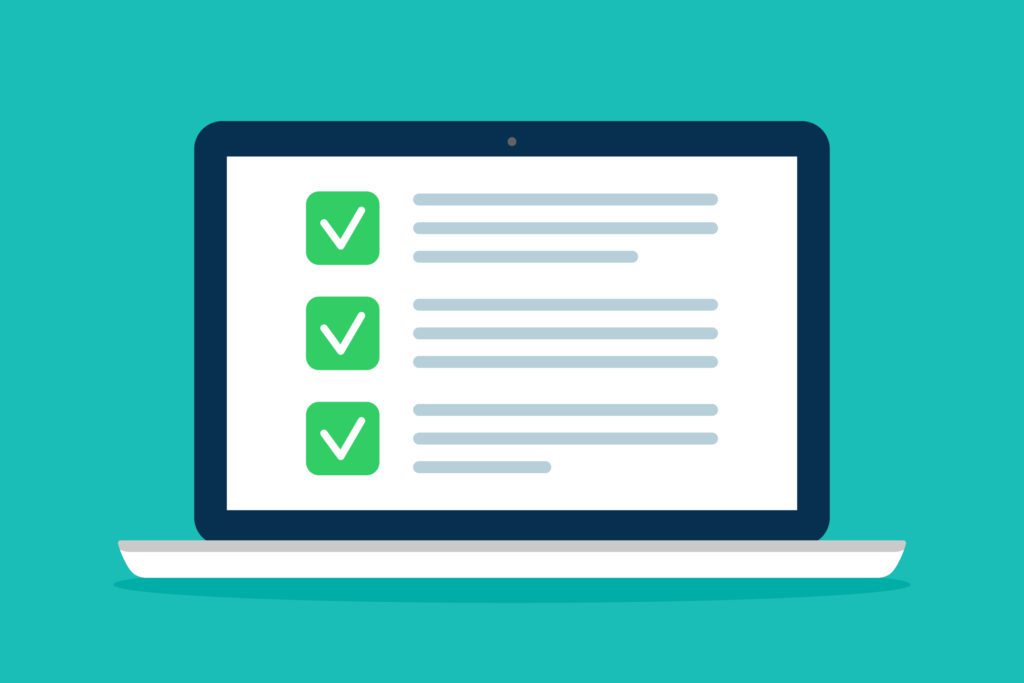
During the last year and a half, there hasn’t been much traveling. Vacations were put on hold due to the pandemic, and companies began conducting all meetings virtually.
But with the vaccine rollout hitting its stride, people are beginning to get out on the road again both for vacation and business travel.
When traveling, there’s a good chance that you’ll have some technology with you. At the very least a mobile device, and possibly a tablet and laptop as well. The lack of being away from home for so long can mean that people may forget device safety tips that prevent their data being stolen while traveling.
Even when away on vacation, employees will often be connected through cloud apps to their business accounts and data. So, any breach of their device can result in a full business network breach. Ensure your devices and information are protected by using and sharing this checklist for data security when traveling.
Use a VPN When on Any Public Wi-Fi
92% of companies aren’t taking any precautions to block the use of unsecured public Wi-Fi on business devices. This leaves those devices wide open to a man-in-the-middle attack.
When you’re on public Wi-Fi at the hotel, airport, or a coffee shop, your data could be spied on by anyone else connected to that same network. It’s best not to connect to them at all, but that’s not realistic. Many people look for public Wi-Fi, so they won’t use up their mobile plan’s data.
To keep your data secure when on public Wi-Fi, use a virtual private network (VPN) application. This encrypts your online connection, so your data is protected.
Don’t Recharge Just Anywhere
The next most important thing for most travelers after finding Wi-Fi is finding a place to charge their devices. This can lead to a direct download of your device data if you’re not careful.
There is an attack called “Juice Jacking,” which is when a fake charging station is set up in a public place. Using your USB charger to charge your device allows that connection to be used to access all your data.
Be careful where you charge and make sure it’s somewhere legitimate, like a restaurant, hotel, etc.
Turn Off Sharing & Discovery Features
Before you leave on your trip, make sure to turn off any sharing and discovery features on all your devices. This will ensure that you aren’t leaving an opening for a hacker to get into your device. It also helps keep your device unseen when it’s on public Wi-Fi.
Back-Up Your Data Before You Go
Unfortunately, phones, tablets, and laptops can get stolen or lost while you’re on vacation. Just leaving an unattended device on a food court table while you get a napkin, is all the time an experienced thief needs.
Make sure to backup all your device data before you leave so you won’t lose that along with your device.
Enable Find My Device/ Wipe My Device Features
Most mobile and laptop operating systems will offer a “find my device” and “wipe my device” feature. This is an important safeguard to use when traveling and can save you hours of stress wondering if your device was stolen or if you just left it somewhere.
If you find your device was stolen, you can use this to clear any data, so it won’t end up in the hands of the thief.
Sign Out of Any Accounts You Won’t Need While Traveling
Most devices stay logged in to multiple accounts. There’s a cloud storage account generally syncing with a device, social media accounts with persistent login, Microsoft 365, and many others.
Another dangerous account to stay signed into when traveling is your browser. Many users store passwords in their browsers, which could let a thief into multiple accounts, some that may have stored credit cards.
Before you leave on your trip, sign out of any accounts that you won’t need to access while traveling to reduce your risk should your device get stolen.
Ensure All Your Web & Cloud Accounts Have MFA Enabled
If you happen to log into an account when on vacation and are on public Wi-Fi, your password could get stolen. But if multi-factor authentication (MFA) is enabled, the thief won’t be able to use that password to access your account.
The few seconds that it takes to enter the MFA code during login is well worth the additional security. Microsoft, which sees 300 million fraudulent sign-in attempts on its cloud services daily, says that MFA is 99.9% effective at blocking those attempted sign-ins.
Get Help Preparing Your Devices Before Your Trip
Connect2Geek helps Treasure valley home and business customers with all types of technology support. Before you go on your trip, stop by to get help securing your devices and data.
Schedule your free consultation to learn more today! Call 208-468-4323 or reach out online.
